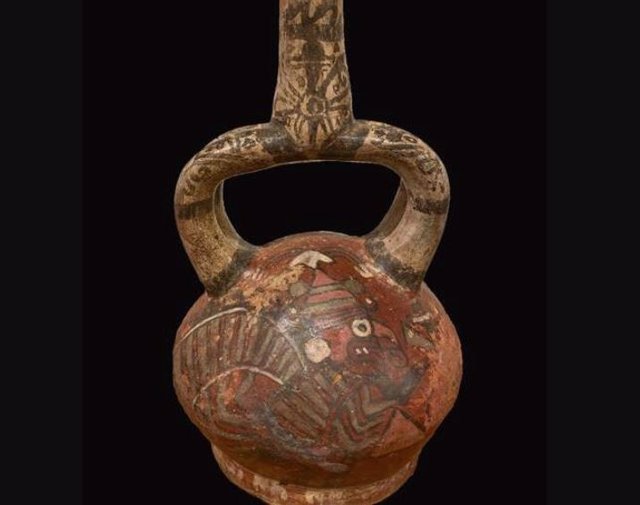March 7 () –
Every potter of the Wari empire, the oldest in Peru, used the same intense black pigment to make ritual ceramics: a sign of the influence of the empire, judges a new study.
The Wari empire spread over the highlands and the coast of Peru between the years 600 and 1050 of our era. “Sometimes it is thought that the Inca was the first great empire in South America, but the Wari were the first“, says Luis Muro Ynoñán, study author, research associate and former postdoctoral scientist at the Field Museum in Chicago.
The Wari did not leave a written record (or at least a system similar to the one we use today). “C”Since they did not use writing, material culture – things like pottery – would have been an important medium for conveying social and political messages.“, says Muro Ynoñán. “The visual impact of these objects would have been super powerful.” Even small details, such as using the right shade of color, could help signify the importance and legitimacy of an object as part of the empire.
“I remember seeing some of these Wari-influenced vessels when I was an archeology student in Peru, they are fascinating,” says Muro Ynoñán. “The intense black color that they have is very characteristic, I have been obsessed with it for years.” Muro Ynoñán was finally able to delve into his interest in pigment during his postdoctoral position at the Field Museum.
He and his co-authors, including Donna Nash, associate curator at the Field and associate professor and chief of anthropology at the University of North Carolina Greensboro, examined ceramics from different Wari-influenced regions, focusing on the chemical composition of the black pigment used. They have published their findings in Journal of Archaeological Science.
The exact formulation of the pigments varied from site to site, but overall there was a striking similarity: many of the Wari vessels examined in the study used black pigment made from minerals containing the element manganese.
“Some of the deposits, specifically in northern Peru, used a different recipe for black, with minerals rich in iron and calcium, before the arrival of the Wari, but after they took control, they changed to manganese-based recipes,” says Muro Ynoñán. This change makes the authors suspect that the Wari empire exercised some kind of “quality control” over the ceramics produced in the different regions, perhaps even supplying craftsmen with the “correct” black pigment.
“In general, black minerals are relatively easy to obtain in the valleys we studied,” says Muro Ynoñán. But any black mineral did not fit the official image of the Wari; instead, he believes that the artisans may have received from the Wari capital minerals containing manganese to produce the correct shade of black.
The changes in tonality are subtle, but Muro Ynoñán affirms that the symbolic meaning of the use of “negro wari” may have been very important. “In general, in the Andean region, the color black is related to the ancestors, to the night, to the passage of time. In the Wari era, color was probably important in imposing a specific Wari ideology on the communities they conquered.”
Although the colors of Wari pottery could indicate imperial control, the ceramics from the different regions maintain their own local character. “Local potters had a lot of flexibility in producing a hybrid material culture, combining Imperial Wari style and decoration with their own,” says Muro Ynoñán. The pottery was unified by the use of black pigments that the Wari empire controlled and circulated through its imperial trade channels, but from there, artists could put their own spin on their works.
“One thing I hope people take away from this study is that all the beautiful artifacts you see in a museum were made by real people who They were highly intelligent and possessed specific technologies to achieve their goals,” says Nash, co-author of the study.
“In addition, these people shared technologies and made decisions. The artisans talked to each other and learned from each other, but sometimes multiple ways of doing things coexisted, such as creating black lines and decoration on a decorated vessel. These different approaches to the same problem they may have persisted due to differences in wealth or class, but it may also be that some people were willing to try new things, while others preferred their traditions“.














